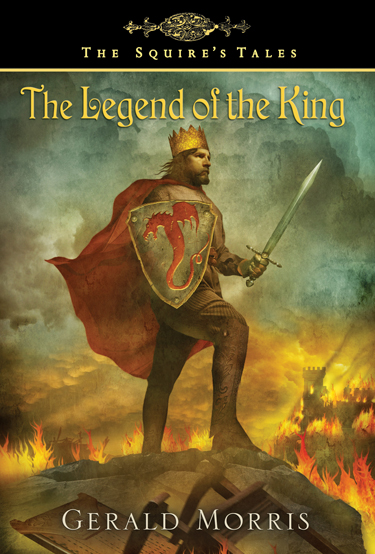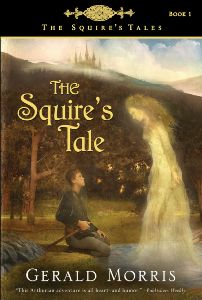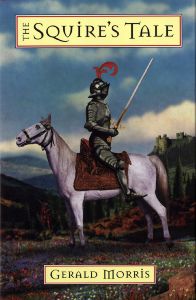This past holiday season two of our bestsellers were self-published books. This was a HUGE surprise to me when I ran the numbers at the end of the year. I have had time now to ponder the reason for this and have several reasons that this happened.
– The books were actually good. I don’t mean to sound snide or elitist, but so often self-published books are lacking editorial control and consequently, can be tough to read. Both books were edited well and professionally produced. There was no hint of a Kinko’s copy job with a spiral binding. These looked like real books. One was a hardcover, The Quest for 29 by Remo Pizzagalli, about hunting, which is not a subject we even stock, but it looked gorgeous. Full color photos throughout made it all the more enticing as a gift book. The other book, Vermont Wild by Megan Price, was a handsome paperback.
– Both authors were relentless at getting excellent press about their books. They didn’t just get press once, they got it repeatedly. They were on radio shows, local public access TV and they were reviewed and mentioned in articles in seemingly every paper in the state. And with every mention in the press, our store was listed as one of the main purveyors of the book. This drove business to the store in an amazing way. Literally, streams of customers, most new to the store, came in looking for these two books at the holidays.
– The authors were good about checking in about stock levels. Normally, self-published authors can get a little overly aggressive about checking stock, but with these two books at the holidays, it was enormously helpful. Also, they both seemed to have endless supplies of books in their cars, so I could say I needed 20 more, and by the end day I got 20.
– Both authors were very meticulous about record-keeping. This just makes my job easier. We try to keep up with receiving self-published books when they come, but so often the consignment issue precludes entering books into the inventory, so having another set of good records was vital. I know how many I’ve sold by the negative numbers listed for that book at the end of the day. Basically, I receive backwards and the authors do it the right way, so it works out.
– We started paying up front for Vermont Wild because Megan is great, very local, and she got a loan to rush a second printing of the book for the balance of the holiday season. Her responsiveness to our needs was like magic. Usually within an hour or two we’d be restocked, and that deserves to be rewarded.
– It’s interesting because these two authors couldn’t be more different. Remo is a retired businessman who is very well regarded in town. He wrote the book knowing little about the book business; Megan is more savvy about the book business and more concerned about how to help us sell her book more profitably. Remo’s book is too expensive and we all know that, but it fills a void and he’s donating a portion of the proceeds to a hunting charity. To his credit, Remo has learned on the fly and has worked very hard to get us a better discount and terms for his book. This has been very helpful, as 10 copies (our standing order, it seems) gets expensive to pay out every time.
– We have sacrificed a bit of a discount to carry both of these books. We only do this because both authors are as local you can get, they are driving a ton of business into the store, and really, good business boils down to being a good neighbor.
– Lastly, the books continue to sell after the holidays. Both authors say that they can personalize books at our store, so we see a seemingly endless line of book sales. And, after 15 years in business, it’s very nice to have some self-published books holding their own with New York Times bestsellers.
Monthly Archives: February 2011
A Small Person in the Store
Josie Leavitt - February 8, 2011
Every slow Sunday should be graced with little moppets who feel comfortable enough in the store to just explore freely without too much parental intrusion. I was working alone at the store when a lovely family came in to browse.
The young girl, Lucy, was happily checking out the whole store. I turned my chair around to discover the young browser checking out the back office. She saw the overstock chaos and pretty much fled. I saw her next sitting on a foot stool by the mass market mysteries exclaiming she needed a new book for nap time. Lucy loved all the books and in her little snowsuit she was just about the cutest thing I’d ever seen. Just when I thought she had reached the heights of cuteness, I heard a noise.
A small sound, not the least bit upset sounding, came from the toy section, “Help.” I listened and leaned over the counter to make sure she was okay. She was fine. “Help me. I can’t see.” Her bemused mom came over. Lucy earnestly looked up at her from her tippy toes with her hand on a ball. “I can’t see the ballie.” So simple, so clear.
I will forever hear her feisty, almost independent cry for help and smile. This little girl didn’t cry or get upset, she just asked for what she needed. She had been rearranging these balls (why do so many kids like to rearrange displays?) according to color, not size as they had been, and grew frustrated when she could no longer see nor feel the balls that needed a new home. There was something so funny and touching about her that I’ve been charmed ever since.
And, as wrong as it seems, I’ve left the ball display just the way Lucy left it.
From the Floor: A Bookselling Video Vignette
Elizabeth Bluemle - February 7, 2011
Wouldn’t it be great if we could share our bookselling experiences in video form? Show handselling techniques, craft a snappy booktalk, or just vent about difficult customers? Well, guess what? (And guess which type I started with?)
You’ve probably seen one or two of the little movies people have made on the Xtranormal website (slogan: if you can type, you can make movies). I was inspired by a hilarious one about a wannabe-novelist speaking to a seasoned, rational writer. (In fact, re-watching it now, I see that I stole a joke. Apologies! Watch mine first.)
Frontline booksellers, this one’s for you! Everyone else — this happens, more often than you’d like to think. (ETA: Not sure why only half the screen is showing up, but if you click on the tiny black arrow instead of on the image, you’ll be taken right to the movie (it really should be called a movini, it’s so short).
Slow Days of Winter
Josie Leavitt - February 4, 2011
I always forget how slow winter can be. It’s almost unfair, really, to have any month follow the craziness of hand over fist sales of December. We go from being unnaturally busy, from the moment the door opens, to the slowest month of the year. It’s just unfair.
One of the great things about the store being slower is I can actually get things done. Things that tend to get put off for another day. Things like deep cleaning. This needs to get done, but can only really happen when the store is not full of customers. It’s not sexy, but it’s part of the job. Other mundane things like trying to organize the back room can happen. Of course our back room was organized (bless my staff) and then I went and messed it up by trying to organize returns.
Returns are an early winter ritual. After the decimation that is the holidays, I see shelves with breathing room and I like it. I also get a real sense of what’s just not going to sell. For us, it’s hardcover books about politics and economics. Doing returns when the store is slower means it’s easier to make massive piles throughout the store based on publisher. I know other stores actually print out lists of books that haven’t sold in a X amount of time. I take a much more anecdotal approach. I examine a certain section and look to see which publishers seem over-represented. Then I decided which publisher I should train my eye on, based on number of books I see that could go, and which publisher I need credit from. Then I go through the whole store looking for books from that publisher. I look at each book that’s on the return bubble and I play this game: would I miss it if it weren’t here? Conversely, am I sick of looking at it? If I answer these questions with no or yes, then in the return tub it goes. Then I check each title for its return status. It’s actually shocking just how fast books go out of print; this just reinforces that returns need to happen more often, or you miss the window.
Doing returns in January and February can help close the cash flow gap of the slower seasons. Of course, publishers hate returns, and in a perfect world, every book I buy would be a winner, but that’s just not the case. Mistakes abound: hardcover picture books with adorable bears just don’t sell at the rate I buy them, too many 100th day of school books (does that day really get celebrated?), and one too mNY young adult hardcovers about the girl with challenges triumphing against the odds of the drunken mom, the absent father, and her eating disorder. These books have to go. Not just because they’re not good books, but because they are money sitting on the shelf and often it’s money bookstores don’t have in January or February.
The other thing that returns do is it readies the store for the new spring books. It’s a sort of out with old, in the new scenario. There is something wonderfully satisfying about knowing that your shelves truly reflect what you want to sell, not just what you happen to have on hand. Inventory control is a fun balancing act, and doing returns allows me to correct the wrongs.
As much as I like doing returns, I can’t wait to get these snowstorms and below freezing weather to turn towards Valentine’s books and Easter Bunnies in the coming months.
Saluting the Undersung: Gerald Morris
Elizabeth Bluemle - February 3, 2011
 I sometimes think that writers who have carved out their own special niche are somehow bypassed by awards committees. How is it that a sparkling talent like Gerald Morris has never won a Newbery or Printz Award or Honor for his nearly flawless retellings of King Arthur legends? He’s made the Best Books for Young Adults lists a few times, and has been on state award master lists, but someone this consistently good should be as widely known and heralded and read by kids as, say, Susan Cooper, whose genius has been critically noted and rewarded, and Rick Riordan, an author whose books I also love and who has been discovered by the wider public.
I sometimes think that writers who have carved out their own special niche are somehow bypassed by awards committees. How is it that a sparkling talent like Gerald Morris has never won a Newbery or Printz Award or Honor for his nearly flawless retellings of King Arthur legends? He’s made the Best Books for Young Adults lists a few times, and has been on state award master lists, but someone this consistently good should be as widely known and heralded and read by kids as, say, Susan Cooper, whose genius has been critically noted and rewarded, and Rick Riordan, an author whose books I also love and who has been discovered by the wider public.
 Gerald Morris is a comfortable master of storytelling. You know you’re in excellent hands from the first sentence of every book, the way you do with writers like Richard Peck and Lloyd Alexander. Morris makes Arthurian legends funny and full of freshness and life while staying true to their origins; he makes structure and pacing seem effortless; and his language is delightful and rich without being at all precious. The characters are so well drawn, so wonderfully and warmly rendered, that they come to feel like old friends. Above all, Morris has a lighthanded playfulness and clarity of expression that are marvelous to read, in a moral framework that inspires integrity, honor, honesty, kindness, and effort, while gently acknowledging human frailty and celebrating joy and redemption. Not too shabby.
Gerald Morris is a comfortable master of storytelling. You know you’re in excellent hands from the first sentence of every book, the way you do with writers like Richard Peck and Lloyd Alexander. Morris makes Arthurian legends funny and full of freshness and life while staying true to their origins; he makes structure and pacing seem effortless; and his language is delightful and rich without being at all precious. The characters are so well drawn, so wonderfully and warmly rendered, that they come to feel like old friends. Above all, Morris has a lighthanded playfulness and clarity of expression that are marvelous to read, in a moral framework that inspires integrity, honor, honesty, kindness, and effort, while gently acknowledging human frailty and celebrating joy and redemption. Not too shabby.
His books usually earn 9+’s on my own personal 1-10 scale and have even earned that rare and wonderful thing, the perfect 10 (The Savage Damsel and the Dwarf, for instance, is one of the 10s).
I am not the only fan, of course. Many, many people have discovered these books via passionate booksellers (and teachers and librarians and parents, etc.). They are easy handsells* and 100% loved by whole families of customers. I’ve never met a single reader who wasn’t delighted and enriched by reading the Squire’s Tales series. That is no simple feat, my friends, and I can’t help wondering what on earth keeps this writer from winning major national awards?! How many authors are that consistently good, book after book? And yet … no gold.
I secretly hoped January 2011 might herald the Year of Gerald Morris, that he might take home a shiny medal, especially because, with little fanfare or public grieving, the Squire’s Tales series was brought to conclusion in 2010 with its 10th and final volume, The Legend of the King. Gerald Morris is one of the great American storytellers, and by gum, he deserves a great big old thank you for adding so richly to children’s literature.
 So — I am now awarding Gerald Morris the first ShelfTalker SUNG Award (short for Saluting Undersung Neglected Geniuses). Release the bards and raise your voices!
So — I am now awarding Gerald Morris the first ShelfTalker SUNG Award (short for Saluting Undersung Neglected Geniuses). Release the bards and raise your voices!
Mr. Morris himself would likely be modest and embarrassed to be singled out for this kind of attention. According to everything I’ve read, he writes children’s books for the love of it and to support his other life as a minister. Here’s a great tidbit from the autobiographical note I found on the Children’s Literature Network’s website, which in turn credits the original source: “An earlier form of this autobiographical essay appears in the Ninth Book of Junior Authors and Illustrators, edited by Connie C. Rockman, and published by H.W. Wilson in 2004.” Mr. Morris says:
“Now I am a part-time associate pastor in a Methodist church in Wausau, Wisconsin, writing children’s novels to support my ministry habit. Often the people I meet in one of my worlds are shocked to hear about my other. Literary people who find out I’m a minister are frequently astonished. (“How interesting!” they say doubtfully, as if they had just discovered that I lived entirely on a diet of worms.) On the other hand, many church people disapprove of my novels, which are full of sorcery and beheadings and fairies and elves and other things that you hardly ever find in Sunday School literature. I’m not what anyone in any of my worlds expects me to be.”
I love that.
And I love these books. Please feel free to share your own Gerald Morris affection, and herald your own undersung heroes of children’s literature.
P.S.

 * About the handselling asterisk: the books are easy handsells as long as you don’t start off by showing kids the covers. They used to have art that indicated the books’ high adventure and hearty humor. The series look was redesigned and now features muted covers (whose black spines are difficult to differentiate among on the shelves, especially with the subtle font color) that—while handsome—often project an ethereal, sometimes melancholy tone. (The latest volume’s cover, The Legend of the King, suits the story well, I must say.) Boys often resist the first book because it looks too romantic and passive. The original version, with the knight sitting backward on his horse, was truer to the spirit of the book, and I keep a hardcover on hand at all times to show kids considering the series. Works like a charm. You only need to handsell the first one, anyway; after that, the readers come back for more and couldn’t care less what the covers look like.
* About the handselling asterisk: the books are easy handsells as long as you don’t start off by showing kids the covers. They used to have art that indicated the books’ high adventure and hearty humor. The series look was redesigned and now features muted covers (whose black spines are difficult to differentiate among on the shelves, especially with the subtle font color) that—while handsome—often project an ethereal, sometimes melancholy tone. (The latest volume’s cover, The Legend of the King, suits the story well, I must say.) Boys often resist the first book because it looks too romantic and passive. The original version, with the knight sitting backward on his horse, was truer to the spirit of the book, and I keep a hardcover on hand at all times to show kids considering the series. Works like a charm. You only need to handsell the first one, anyway; after that, the readers come back for more and couldn’t care less what the covers look like.
Igloo Reading
Elizabeth Bluemle - February 1, 2011

Fourth-grader, cozy in igloo, reads Barbara O'Connor's HOW TO STEAL A DOG. Photo credit: Katarina Krek.
Here’s a new take on curling up with a favorite book on a snowy day: build an igloo. I love this picture beyond reckoning. It’s a fourth-grader happily nestled in a snow fort, reading Barbara O’Connor‘s delightful How to Steal a Dog, oblivious to the outside world. (The reader’s mom sent the photo to Ms. O’Connor after a school author visit.)
Isn’t that what a great book does? Absorb you so deeply you aren’t aware of anything around you but the world of the story? Susan Cooper captured that absorption perfectly in Dreams and Wishes: Essays on Writing for Children (p. 24, if you want to know):
Watch the child reading a book: really reading, totally caught up in the world into which the words on the page have transported him…. He is sprawled or curled or propped in some inelegant position, face concentrated and intent, motionless; he isn’t with you any more. He doesn’t hear you when you call; he doesn’t notice that the sun has set and that he should turn on the light. He’s away out there with the author, in wonderland.
Someone needs to contact the photographer to make this into a reading poster pronto. Really. It’s iconic.
Since we’re expecting a giant dumping of snow tonight and Wednesday, I invite you to send me your photos of snowy-day reading. I’ll post the best ones here.
